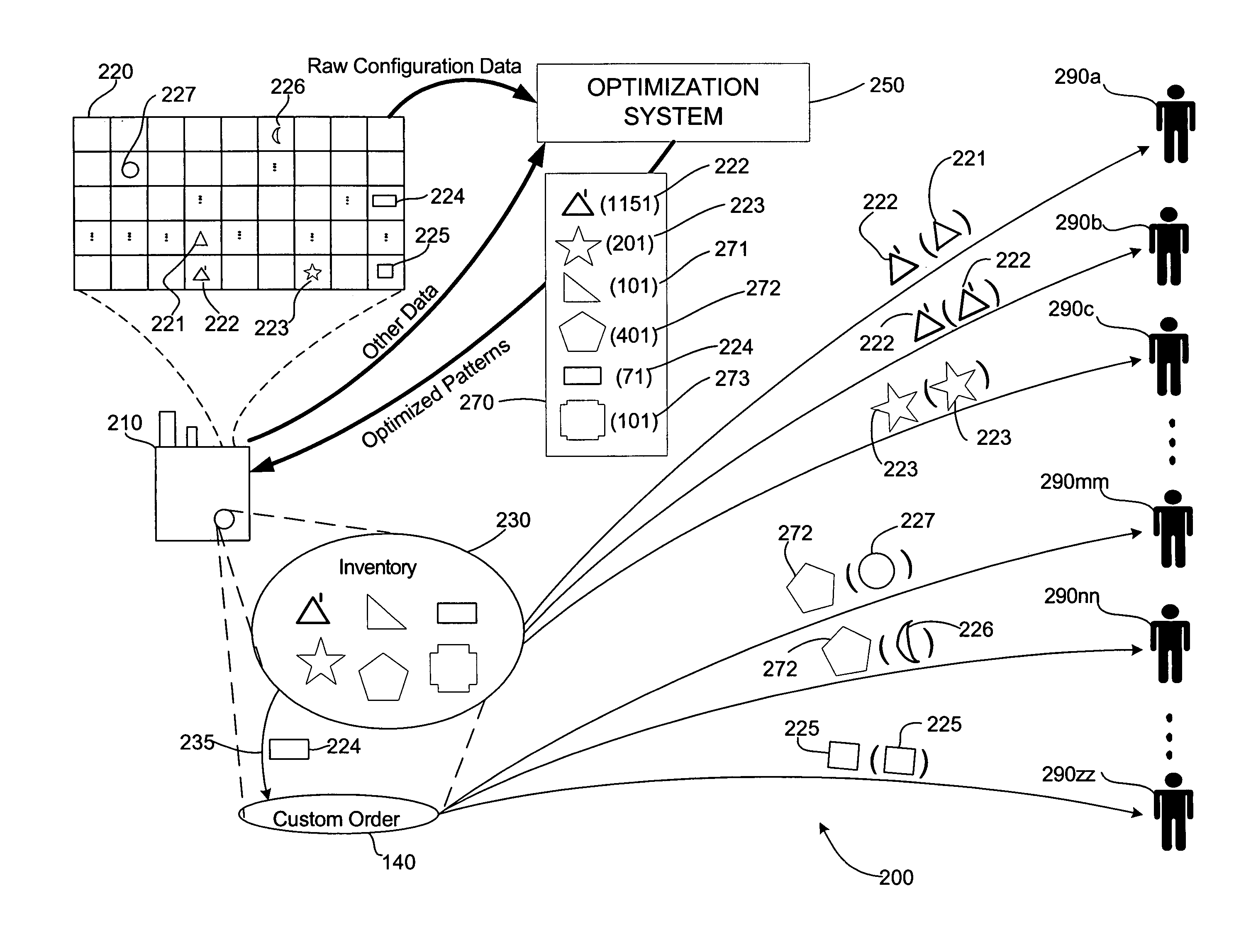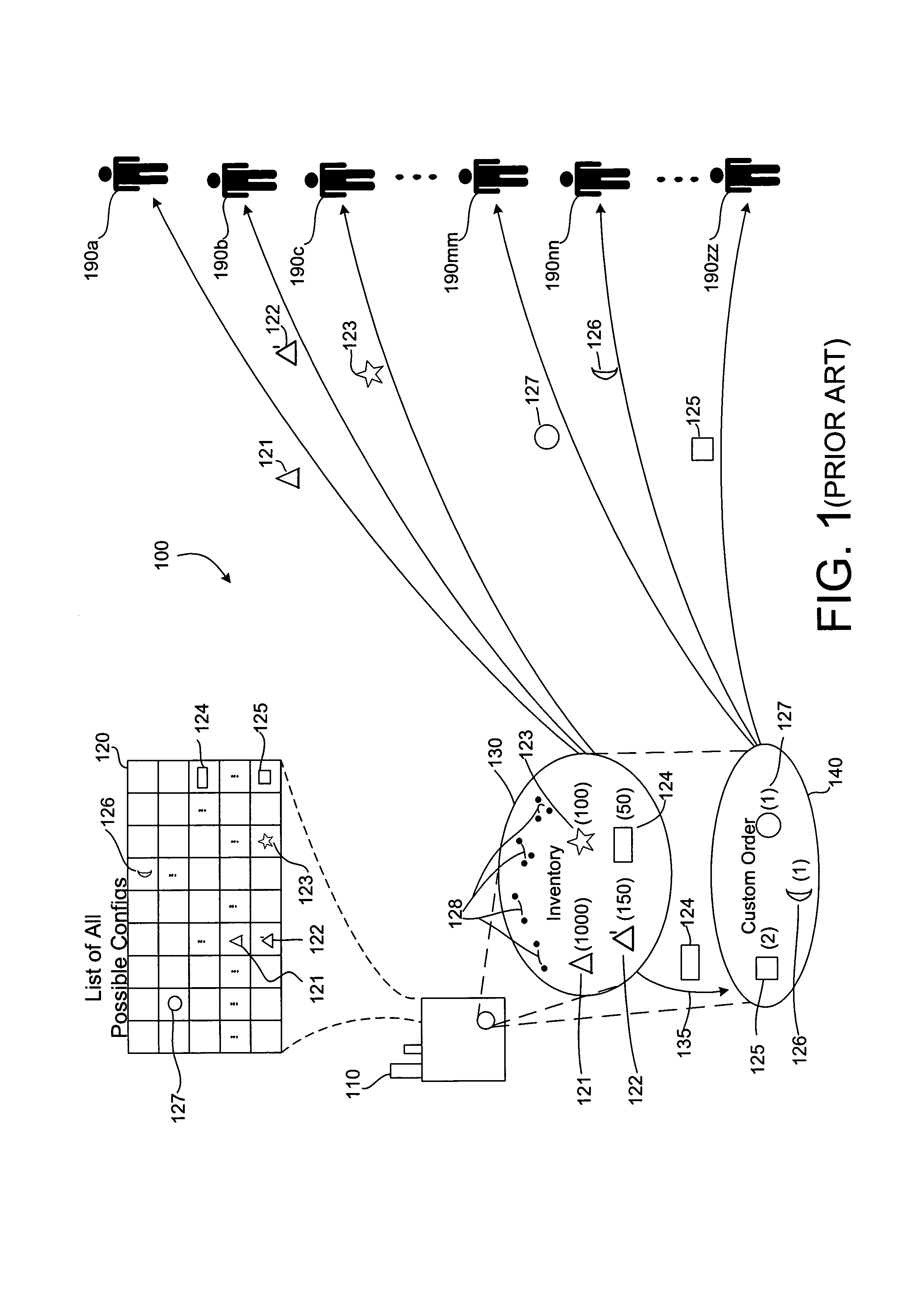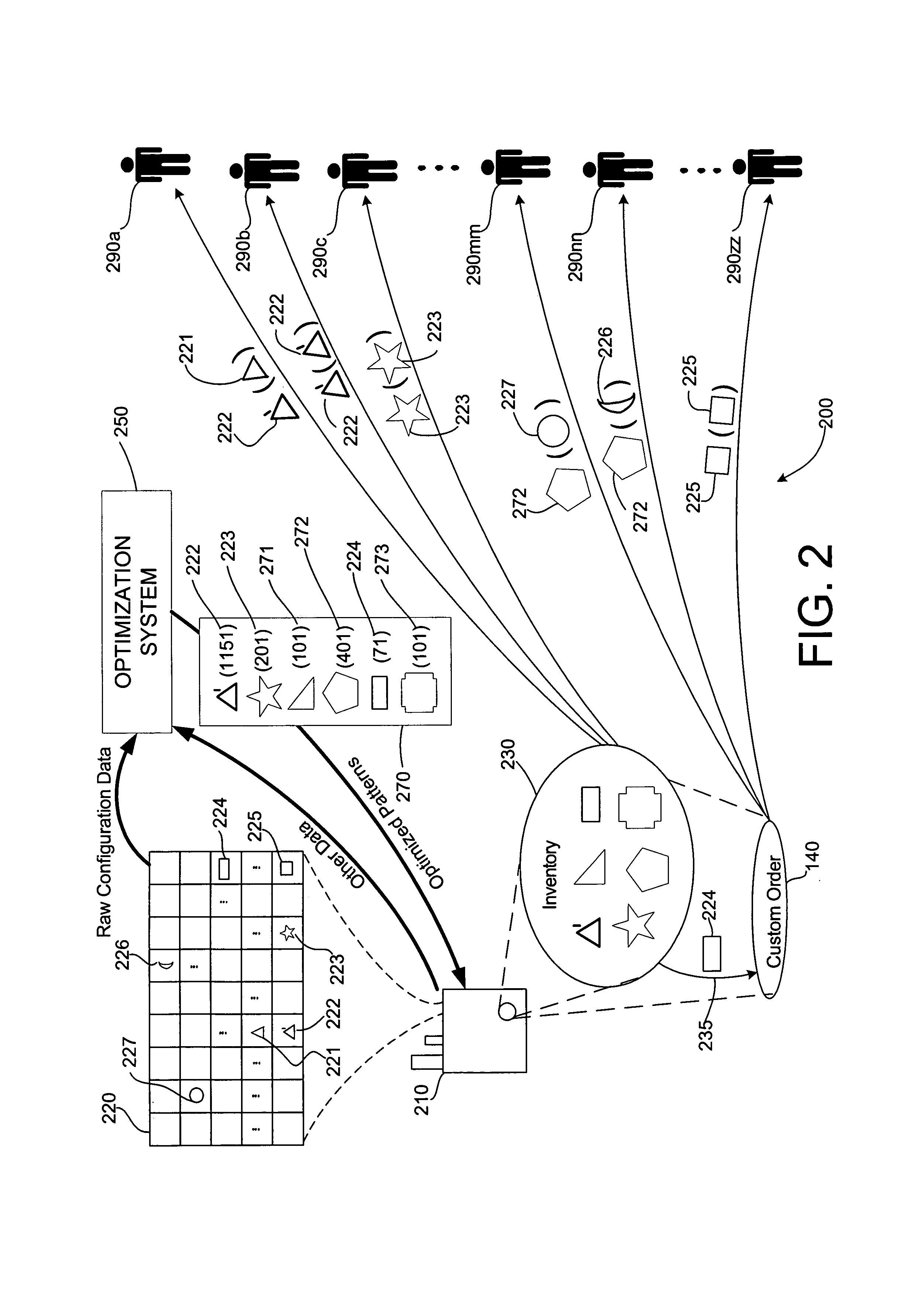Product configuration modeling and optimization
a product configuration and optimization technology, applied in forecasting, instruments, data processing applications, etc., can solve the problems of escalating costs, complex, and inability to pass on to customers, so as to maximize customer demand coverage, minimize costs, and maximize profit
- Summary
- Abstract
- Description
- Claims
- Application Information
AI Technical Summary
Benefits of technology
Problems solved by technology
Method used
Image
Examples
case 1
uration “i” is in “UPGRADE(j).” Then:
[0194]r(i,j)=revenue for configuration i,
[0195]c(i,j)=cost for pattern j.
This is true since the customer pays for configuration “i,” but the customer is given pattern “j.”
case 2
uration “i” is in “CONVERT(j),” and not in “UPGRADE(j).” Then:
[0196]r(i,j)=revenue for configuration i,
[0197]c(i,j)=cost for pattern j+convert(i,j).
This is true since the customer pays for configuration “i,” but the company has to pay to build pattern “j” and then pay to convert it to configuration “i.”
case 3
uration “i” is in “ACCEPT(j),” but is not in “CONVERT(j)” or “UPGRADE(j).” Then:
[0198]r(i,j)=(revenue for pattern j)*prob(i,j),
[0199]c(i,j)=(cost of pattern j)*prob(i,j).
This is true because the company pays to build pattern “j” and the customer pays for pattern “j,” but there is only a probability “prob(i,j)” that the customer demand is actually captured. Some percentage of demand (1-prob(i,j)) is lost.
[0200]At this point it is necessary to introduce mathematical notation to express the optimization model in a precise and unambiguous way. The notation used is standard in the fields of Operations Research and Mathematical Programming. This notation can be found in any issue of the journalsOperations Research, published by the Institute for Operations Research and Management Science (INFORMS), or Mathematical Programming, published by the Mathematical Programming Society (MPS), which are incorporated herein by reference in their entirety.
[0201]The first model (P1) 3600 is shown in FI...
PUM
 Login to View More
Login to View More Abstract
Description
Claims
Application Information
 Login to View More
Login to View More - R&D
- Intellectual Property
- Life Sciences
- Materials
- Tech Scout
- Unparalleled Data Quality
- Higher Quality Content
- 60% Fewer Hallucinations
Browse by: Latest US Patents, China's latest patents, Technical Efficacy Thesaurus, Application Domain, Technology Topic, Popular Technical Reports.
© 2025 PatSnap. All rights reserved.Legal|Privacy policy|Modern Slavery Act Transparency Statement|Sitemap|About US| Contact US: help@patsnap.com



